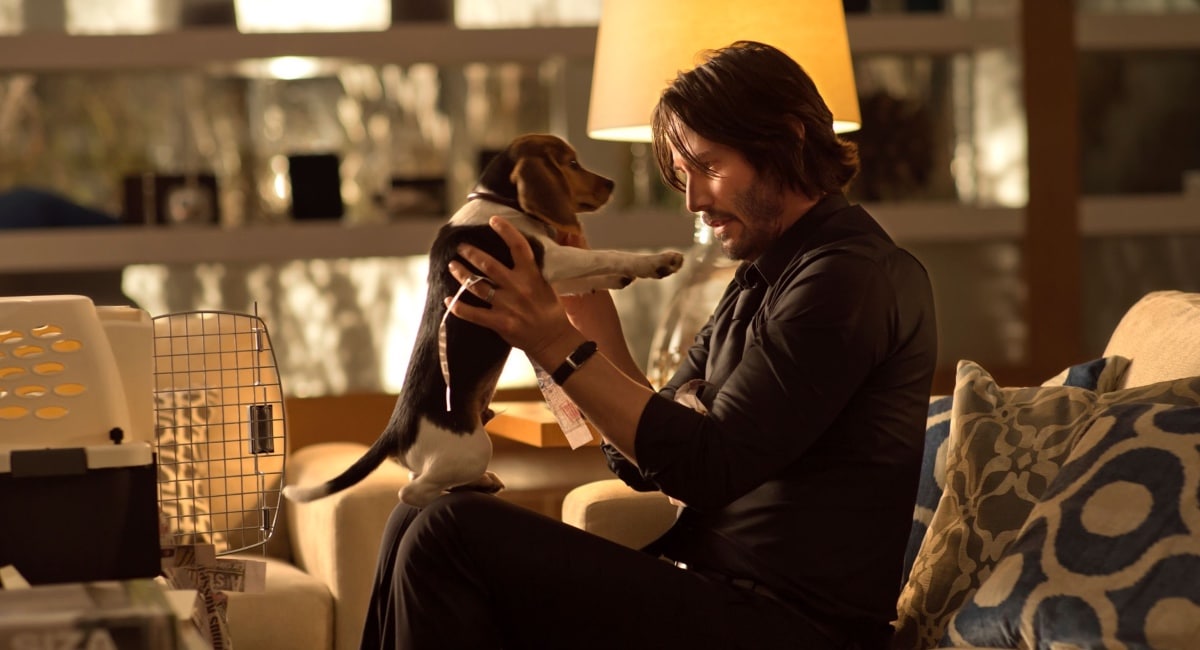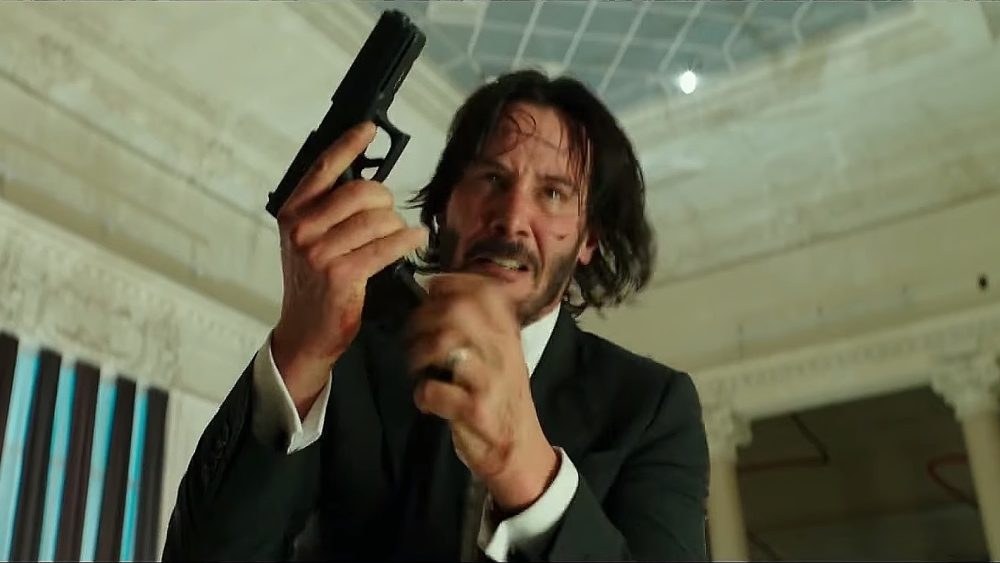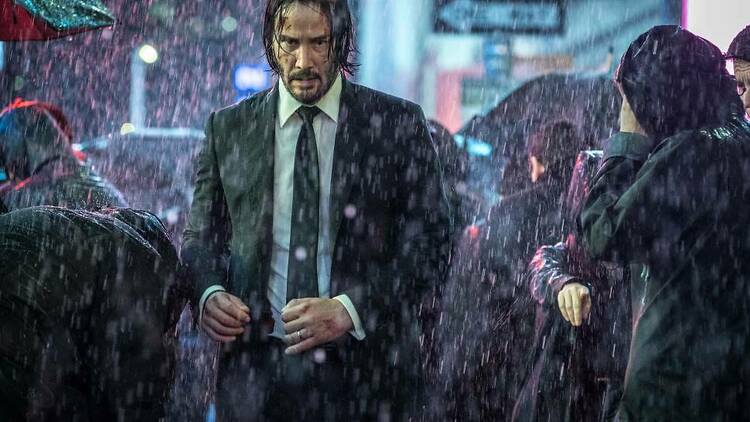The Beat’s Gregory Paul Silber has been accused of having a bit of an… obsessive personality. Each week in Silber Linings, he takes a humorous look at the weirdest, funniest, and most obscure bits of comics and pop culture that he can’t get out of his head.
If you’re reading this site, you probably enjoy fiction about people beating each other up, and if you enjoy fiction about people beating each other up, there’s a good chance you’ve seen last year’s John Wick: Chapter 4. And, of course, if you’ve kept up with the John Wick series, you almost certainly don’t need me to tell you that all four installments are capital-G Great action movies.
Partly because of the franchise’s blockbuster success, I worry the average person doesn’t realize John Wick’s adventures are in a different league than most other contemporary franchise fare. It may have similar box office returns (currently surpassing $1 billion worldwide). Still, the latest MCU thing or Jurassic-whatever can’t compete with the auteur craftsmanship of the series that arguably relaunched Keanu Reeves‘ career.
Keanu Reeves’ best John Wick film was the first
Let’s start with Reeves, not because he stars as the titular reluctant assassin, but because he’s a key reason people underestimate this franchise. Maybe Keanu is a seemingly universally beloved Internet Boyfriend now, but in 2014, when the original John Wick was released, he was still a punchline. I remember because I’ve been a massive fan of The Matrix (and a Matrix-sequel apologist) since I was 12. So, I was on the “Keanu Reeves is a good actor” train for over a decade before it was cool.
I don’t mean to sound defensive. However, I suspect younger readers have no idea how ubiquitous the notion was in 2014 that Keanu was just a weird, goofy dude who couldn’t act and had no business being the star he was in his younger years. In the decade that followed, Reeves has deservedly enjoyed a more positive reassessment by fans and critics alike, and his role in that first Wick film specifically might be the best of his career.
…More on that later.
I’m not done talking about how the original John Wick‘s artistic and commercial success seemed to come out of nowhere. For one thing, let’s face it: John Wick isn’t a great title, especially in 2014, when nobody knew what the hell a John Wick even was. In general, I would advise against making the title of your story the name of Some Guy, especially when it’s not even a famous Some Guy at the time of release.
(While we’re on the subject, John Wick: Chapter 3 – Parabellum is an especially bad title for an otherwise great film. A colon and a dash in a single title are too much punctuation and don’t match the other sequels’ title structure. What the hell is a “Parabellum” anyway?)
I don’t recall much advertisement for the original John Wick either, which might have something to do with its estimated budget of only $20-30 million. Compared to other action films around the same time, 2016’s Deadpool had a $58 million budget, which was considered quite modest for an action blockbuster at the time.
That first John Wick movie was a sleeper hit. However, as positive word of mouth spread, it eventually grossed $86 million. I didn’t see it until 2016 after hearing my coworkers rant to each other about how much they love the film. Since I don’t follow football, I spent my Superbowl Sunday that year watching John Wick for the first time instead of the game, and instantly fell in love (this might shock you, but the guy who writes a column about comics and related geek shit doesn’t follow sports).
What lengths would you go to for your pet?
If you’re familiar with the movie, you know the gist of the plot: retired assassin John Wick’s wife dies, gifting Wick a puppy as one last loving gesture so that he has “someone to love” in her absence. Wick instantly falls in love with the dog, but after the grieving man unwittingly pisses off the son of a Russian mob boss, they raid his home, steal his beloved car, burn the house down, and, worst of all, kill the dog.
I know the thing with the dog is what keeps many people away from John Wick (there’s a whole website for them), including at least one editor of this very column (Greg is correct; his editor is not down for using animal death as a plot device and will use this moment to ride his hobbyhorse: I do not forgive Tom King for killing Ebony). And look, I get it. I love dogs—I grew up with a gentle and sweet black lab named Max, whom I miss every day—and it’s always a huge bummer when they die in a movie or any work of fiction, for that matter (the same goes for cats). Bullies at school used to “joke” that they wanted to kill my dog. He died of natural causes several years later, but it was fucked up.
So, hear me out: think about how much you love your dog. Now think about the lengths you would go to if anyone dared hurt them. That’s the catharsis of John Wick in a nutshell. But it’s not just catharsis that makes these films so powerful. It’s also about craftsmanship.
The John Wick franchise is about craftsmanship
The original John Wick is directed by former stuntmen Chad Stahelski and David Leitch, the former of whom was a stunt double for none other than Keanu in The Matrix; Stahelski directed the following three Wick films on his own, while Leitch, Brad Pitt‘s former stunt double, went on to direct other hits like Deadpool 2 and Bullet Train, the latter of which starred Pitt himself (who had a cameo in Deadpool 2 as well). Unsurprisingly, the stunt work in all of the Wick films is extraordinary, but it’s not just because of the danger and spectacle of the stunts themselves.
One of the many things that set the John Wick films apart from most mainstream action films of the 21st century is how much space the filmmakers give the actors and stunt performers to look as impressive as possible. I mean “space” literally: unlike the quick-cut action sequences that have been a hallmark of many action films for the past few decades, the Wick filmmakers go to great lengths to ensure audiences can see all the impressive stunts and fight choreography clearly and coherently.
Reeves went through extensive combat training, so there are plenty of opportunities to see him kick ass in all his glory (although he’s famously gracious to his stunt double colleagues), and many of the supporting actors throughout the films either went through similar training or were already adept martial artists who could provide many of their own stunts. This, combined with hard-hitting sound design, allows for long, exhilarating shots that allow the audience to feel fully immersed in the action.
The world-building within the John Wick universe is just as impressive, especially as it’s built out throughout the sequels that get progressively wackier. It’s pretty funny to think about: this is a universe ruled by a not-so-secret cabal of assassins who have their own complex set of laws, bureaucracy, cultural mores, and even economic structures; the exchange of special assassin coins is a running motif throughout the movies, and it’s comically unclear how much they’re supposed to be worth because they can be used to buy everything from armored tuxedos to maps of underground lairs.
Everyone can be an assassin, from backpackers to busking violinists to hobos (ruled by Laurence Fishburne as The Bowery King; reuniting The Matrix co-stars). By the fourth film, there’s even a sexy assassin radio station in Paris. You’d think from these films that one in 10 people are assassins, and that’s a conservative estimate.
Humanity makes the John Wick franchise so special
Yet, for all the franchise’s stylistic flash and narrative complexity (and silliness), their humanity ultimately makes the John Wick movies so special. On paper, it’s comically absurd that the admittedly horrific murder of one man’s dog would trigger a globe-trotting adventure of revenge that results in the deaths of countless assassins trying to take down Keanu Reeves. But it’s all played quite straight, and Reeves’ performance, in particular, is the key to making it all believable.
It’s not just about seriousness (because the films do have a sense of humor) but sincerity. In a genre driven by macho posturing, John Wick is an action hero who frequently cries onscreen and is characterized by a deep sadness. As much as we root for John and have ample opportunities to see how much of a badass he is, Stahelski and company never let us forget that Wick is ultimately a tragic figure, with the fourth film’s finale punctuating this. I won’t spoil it, but if you watch the saga from the beginning, you can see that it couldn’t have ended any other way.
The John Wick films have become beloved and iconic enough that they don’t need little old me to help sing its praises. But sometimes, even when a piece of media seems to have reached peak popularity, no acclaim can ever feel like enough.










Well said
Comments are closed.